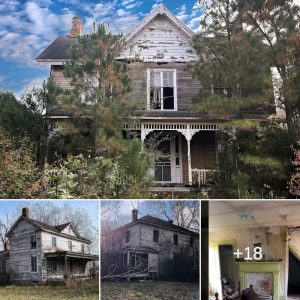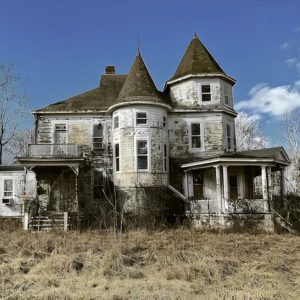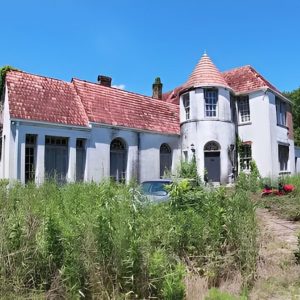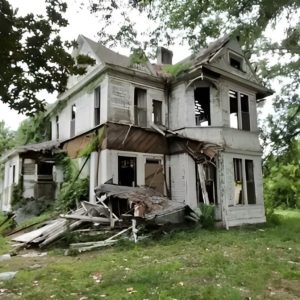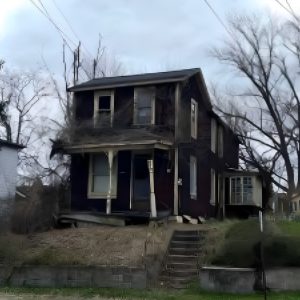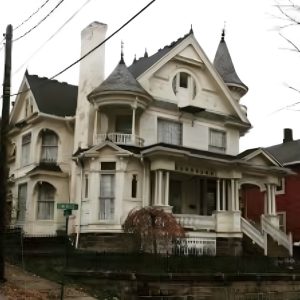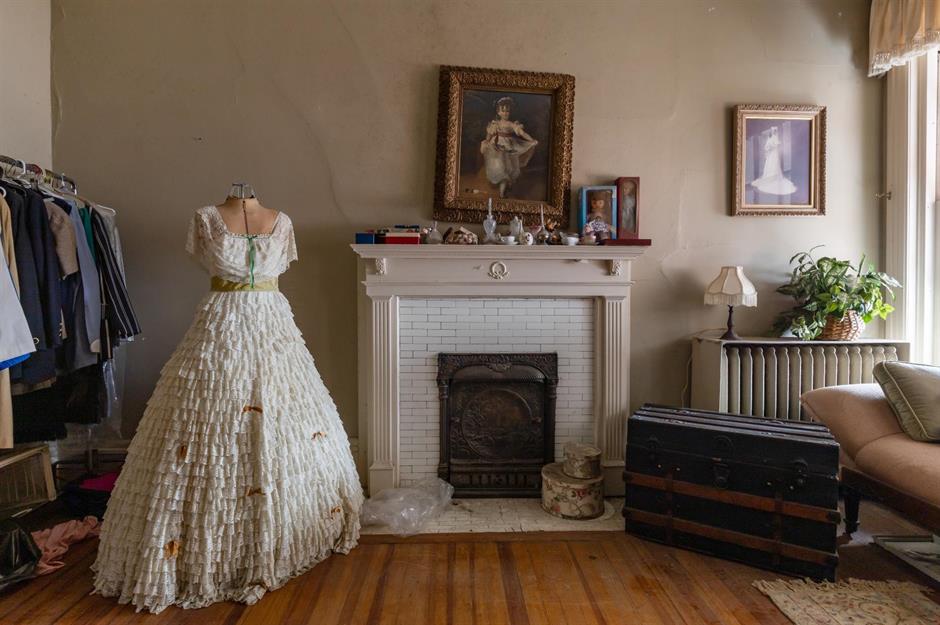
Exploring the world’s eeriest abandoned mansions isn’t for the faint-hearted. Left to languish with their secrets, there’s no telling what you’ll stumble across within their storied walls.
Click or scroll on to retrace the steps of these brave photographers and urban explorers, who’ve delved deep inside some of the creepiest deserted homes around. Feeling brave?
Bradley-Smith House, Alabama, USA
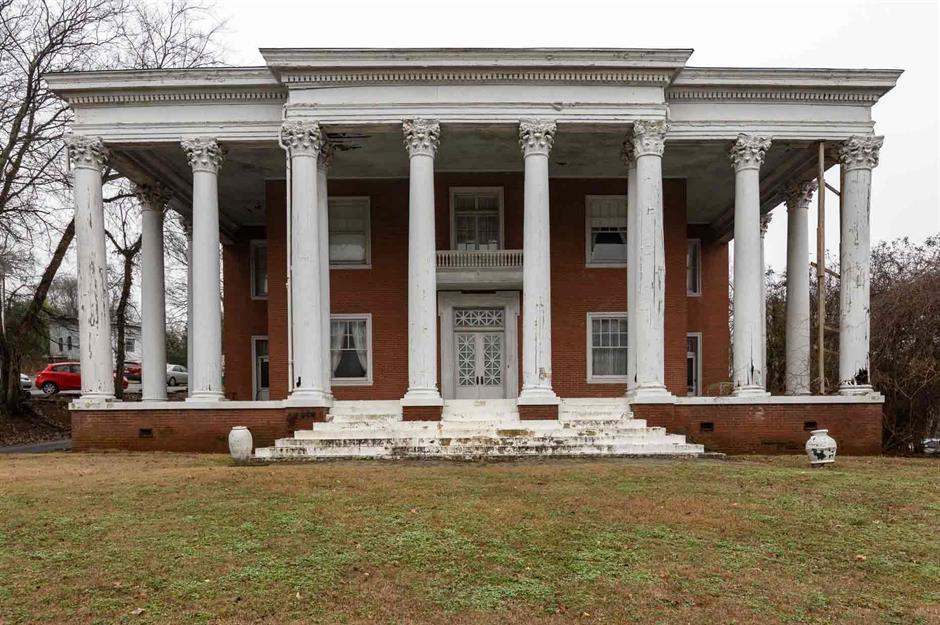
Captured by photographer Leland Kent of Abandoned Southeast, the Bradley-Smith House in the Glen Iris neighbourhood of Birmingham, Alabama, holds more than its fair share of surprises.
Despite its neglected condition, the home’s exterior, with its two-storey wraparound porch, prominent portico and fourteen Corinthian columns, still makes an imposing first impression.
Built in 1902, the mansion is the work of Thomas Walter III, grandson of the architect who added the famous central dome to the US Capitol building.
Bradley-Smith House, Alabama, USA

The landmark home was built for Lee Carrington Bradley, who was a prominent lawyer in the city.
Walking into the entrance hall is like stepping back in time. From the magnificent coffered ceiling and internal columns to the neoclassical-style doorways, the grandeur of the property has endured, despite its abandonment.
Sadly, the house was the scene of tragedy for the Bradley family. According to Leland Kent, Lee’s son, Thomas Lyons Bradley, passed away at the mansion aged just 21, having choked to death on shards of oyster shell at the kitchen table.
Bradley-Smith House, Alabama, USA
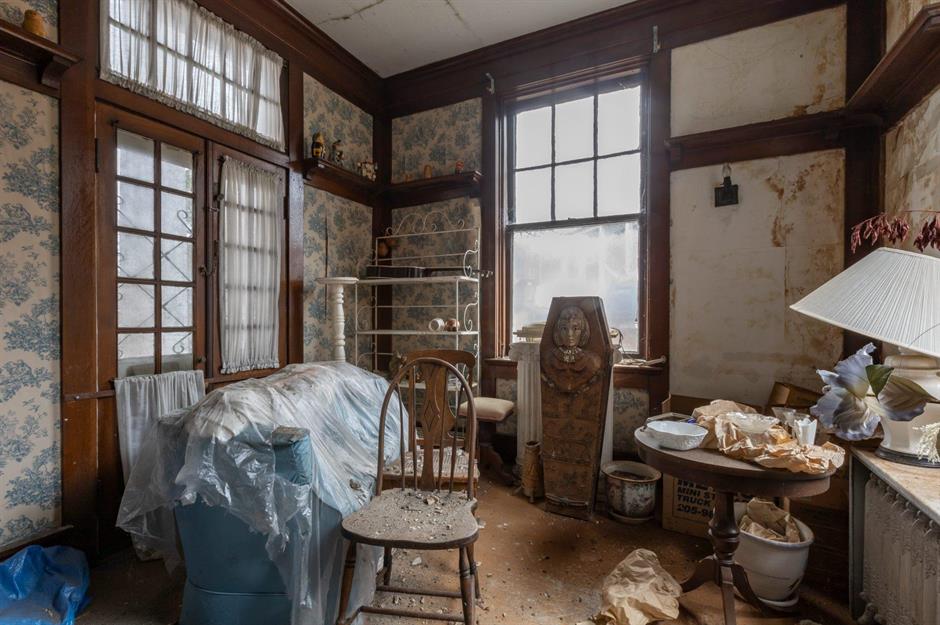
The mansion is filled with curious artefacts and antiques. This light-filled room, which is evidently suffering from damp, holds an especially mysterious item – what appears to be a wood-carved ornament in the style of an Egyptian sarcophagus, perhaps a theatrical prop left by the last owners.
Following Lee’s death in 1942, the house was bought by Ollie Dalton Smith and his wife, Carolyn. Another notable resident to call the mansion home, Smith was the youngest FBI agent in the bureau’s Washington, DC office. He went on to work as an attorney, a property developer and vice-president of a power company.
Bradley-Smith House, Alabama, USA
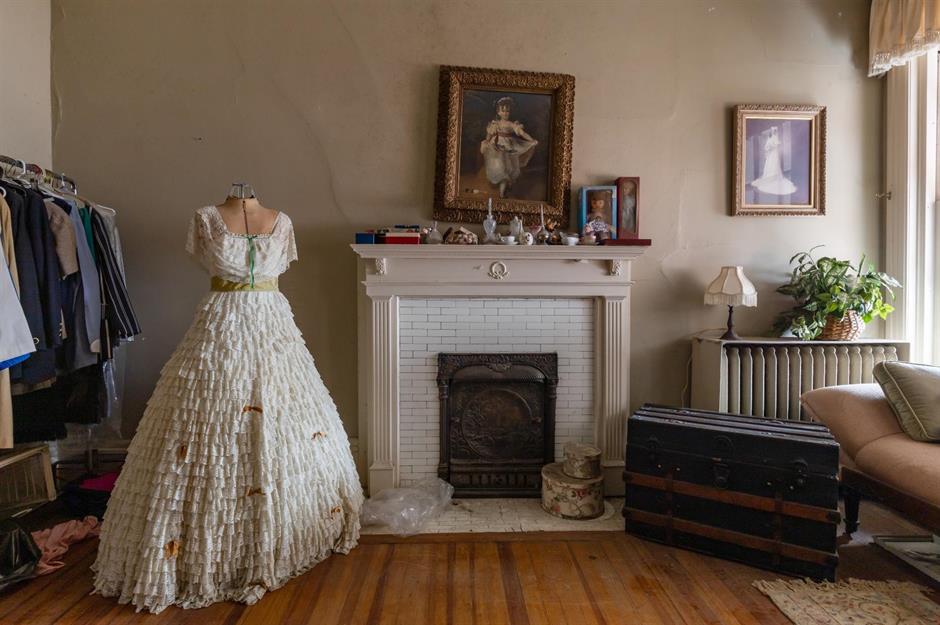
While Carolyn died in 2003, Ollie Smith continued to live in the mansion until his death in 2016.
Among the most unusual items left behind is this beautiful, white multi-tiered dress in one of the upstairs rooms. A rack of men’s suits hangs beside it, while on the mantlepiece, there’s a photo of a bride – perhaps the owner of this elaborate dress.
It’s unclear what will become of the mansion. With many older homes in the area being razed to make way for apartment blocks, Birmingham Historic Society is advocating for the preservation of local historic properties like the Bradley-Smith House, so there may be hope on the horizon.
Château de Dönhoffstädt, Drogosze, Poland
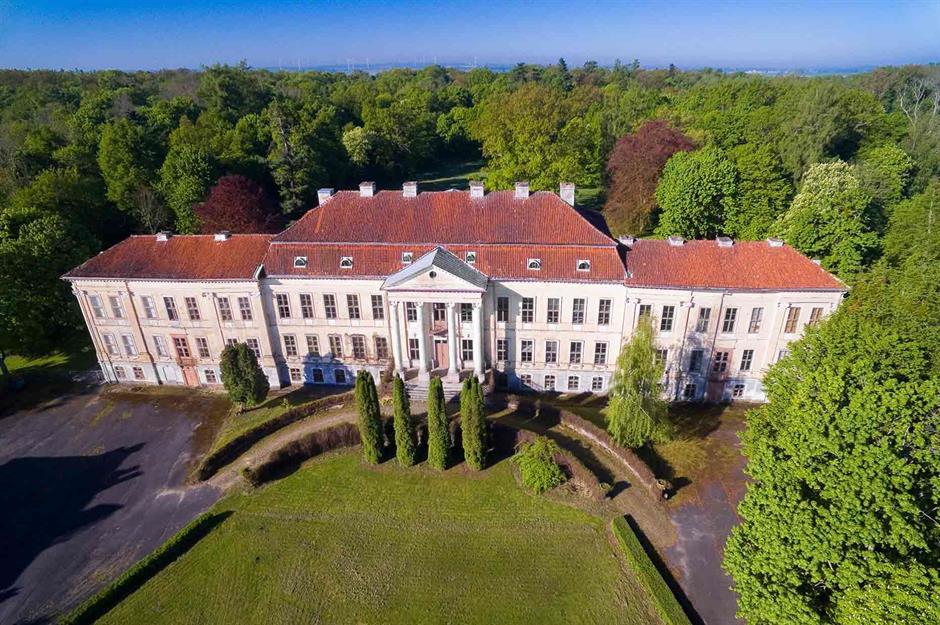
Mariusz Świtulski / Alamy
Known as the East Prussian Versailles, Château de Dönhoffstädt is a sprawling Baroque-style palace nestled amid parkland in the village of Drogosze in the north of Poland.
The acreage was reportedly once the site of a previous palace that burned to the ground in the late 17th century. Following the disaster, the estate passed into the hands of Count Bogusław Friedrich von Dönhoff, a Prussian noble, who commissioned an extravagant new seat for the Dönhoff dynasty. The reborn palace was named Dönhoffstädt.
Constructed between 1710 and 1714, the mansion’s vast square footage continued to grow in the decades that followed, with a chapel and additional wings added in 1725.
Château de Dönhoffstädt, Drogosze, Poland
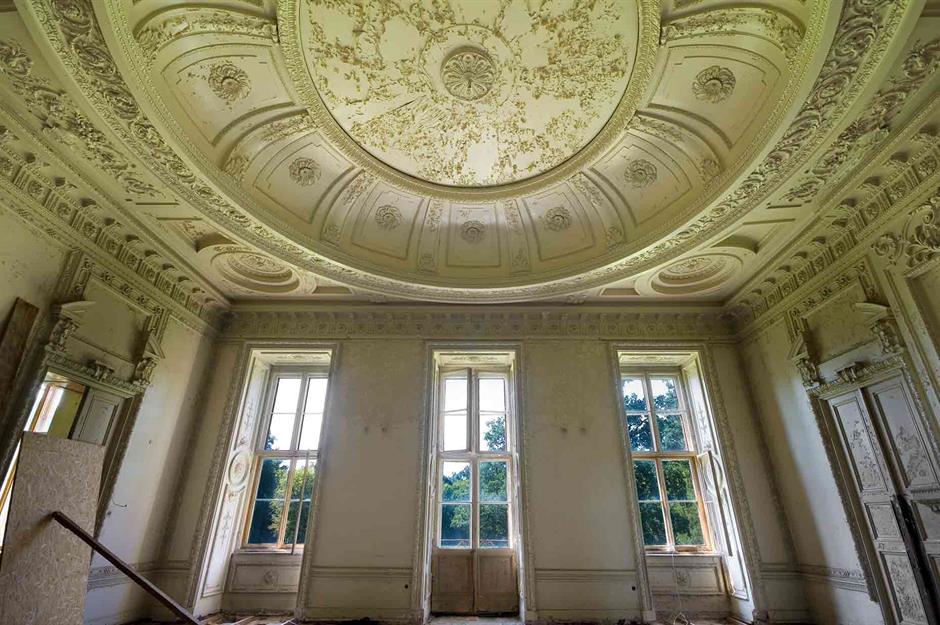
Mariusz Świtulski / Alamy
Symbolism is evident throughout the building’s elaborate design. The palace contains 365 windows across its exterior to represent the days in a year, 52 rooms, corresponding to the number of weeks in a year, 12 chimneys for the number of months and seven balconies, one for each day of the week.
One of the largest residences in the region, the palace is rumoured to have hosted a plethora of historic figures in its heyday, including Napolean Bonaparte and Frederick William IV, King of Prussia.
This magnificent space was once a glittering ballroom where Prussian high society would have mingled beneath that incredible vaulted ceiling.
Château de Dönhoffstädt, Drogosze, Poland
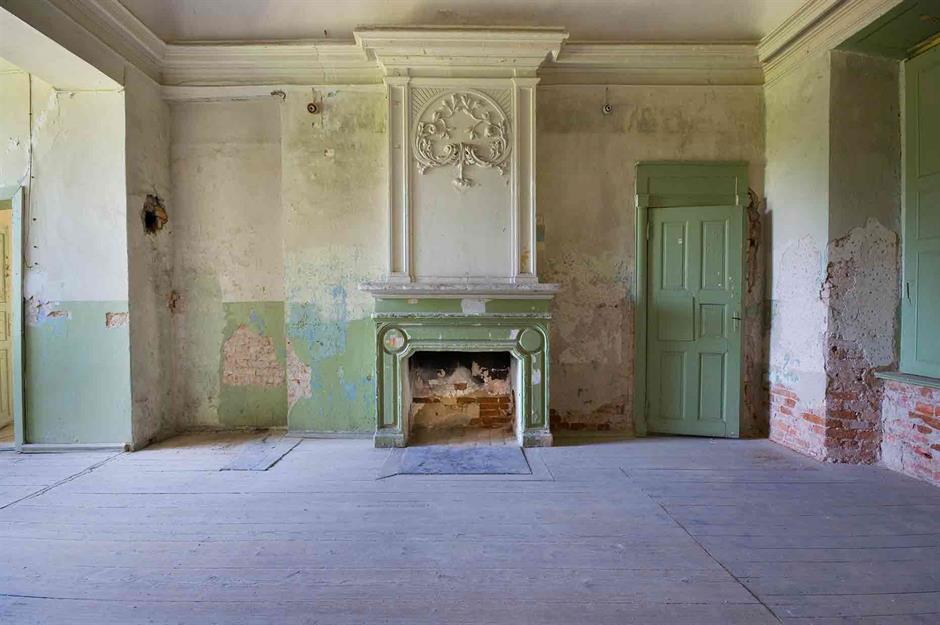
Mariusz Świtulski / Alamy
In the subsequent centuries, the palace passed through the hands of numerous generations of nobility until the Second World War. As the conflict raged, the mansion’s owners decided the leave the property.
At the end of the war in 1945, the estate was used as offices for the NKVD, otherwise known as the Soviet Secret Police. During this period of turmoil, the palace was looted and stripped of its valuable artworks and furniture, leaving it the shell we see today.
Château de Dönhoffstädt, Drogosze, Poland
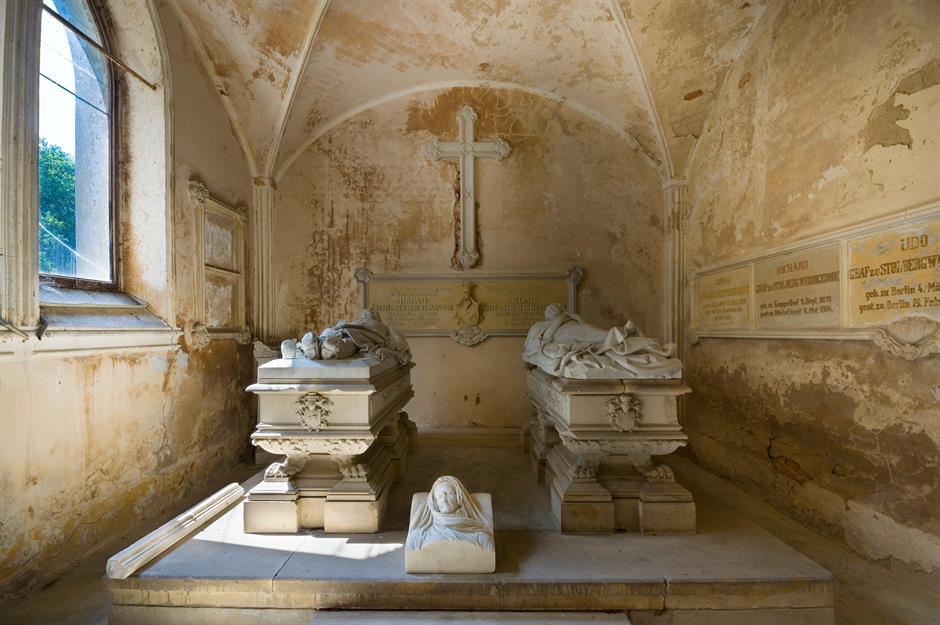
Mariusz Świtulski / Alamy
Pictured here is the palace’s mausoleum, an addition made in 1889. The resting place of the Dönhoffs and their descendants, the ethereal, vaulted space features marble sarcophagi, with tombstones lining the walls.
In the decades after the war, a state farm was established in the grounds along with an agricultural training centre. Most recently, the palace was bought up in the 1990s by a private buyer, and while the gardens are well-maintained, renovations of the mansion itself are yet to begin.
Rainer-Lewis House, Alabama, USA
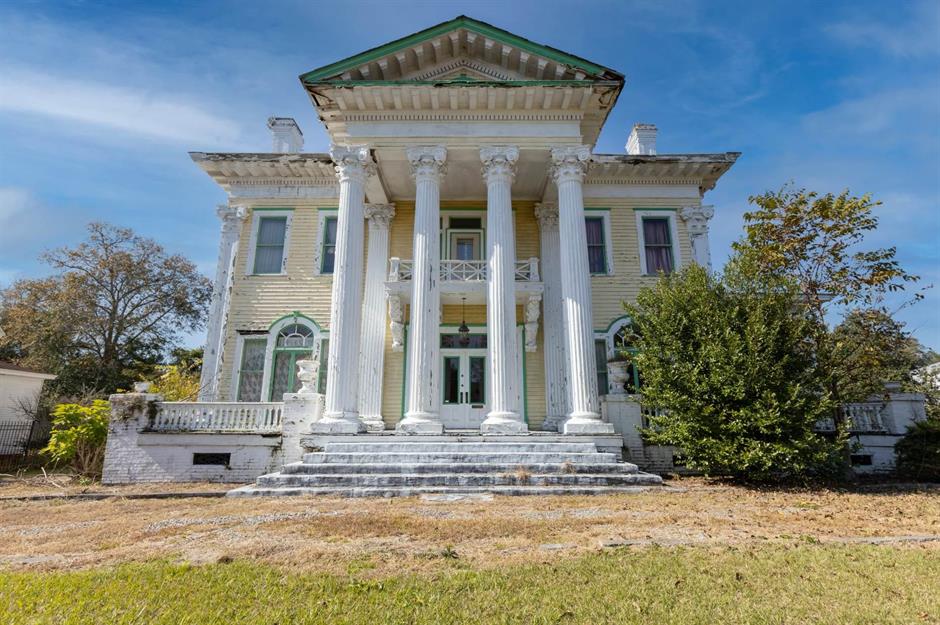
Located in the heart of the Deep South in Union Springs, Alabama, the Rainer-Lewis House was designed in a majestically imposing neoclassical style meant to echo the form of a Roman temple. Photographed here by Leland Kent, a huge portico of four towering Corinthian columns and a steeply pitched decorative roof create an imposing welcome.
While reports are conflicting, construction on the 12-room mansion is thought to have started in 1902 and was completed two years later.
Rainer-Lewis House, Alabama, USA
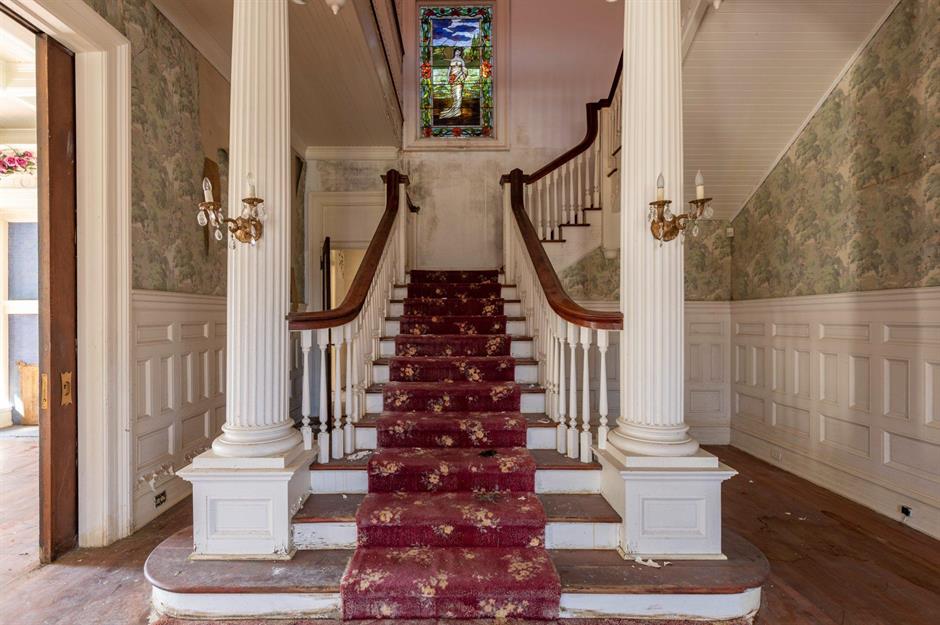
Inside, the elegant architecture continues in the grand entrance hallway. A large staircase, framed by exquisitely moulded columns, leads the eye through the pleasing symmetry of the interior. The crisp white columns and marble-effect walls are still in reasonable condition.
However, take a closer look and signs of neglect start to come into focus. Damp appears to be setting in across the walls, with paint peeling off the side of the staircase and dust and debris coating the red carpet runner.
Rainer-Lewis House, Alabama, USA

This sitting room is a departure from the hallway’s grand proportions. However, there’s plenty to admire here. Elegant leaded patio doors are framed by an arched window, flooding the room with natural light. Carved wood panelling envelops the walls, while the last owners’ swagged curtains are still hanging in the windows.
Businessman Sterling Price Rainer Jr was thought to have occupied the house sometime in the early 20th century. Rainer Jr would go on to become a civil court judge and the mayor of Union Springs.
Rainer-Lewis House, Alabama, USA
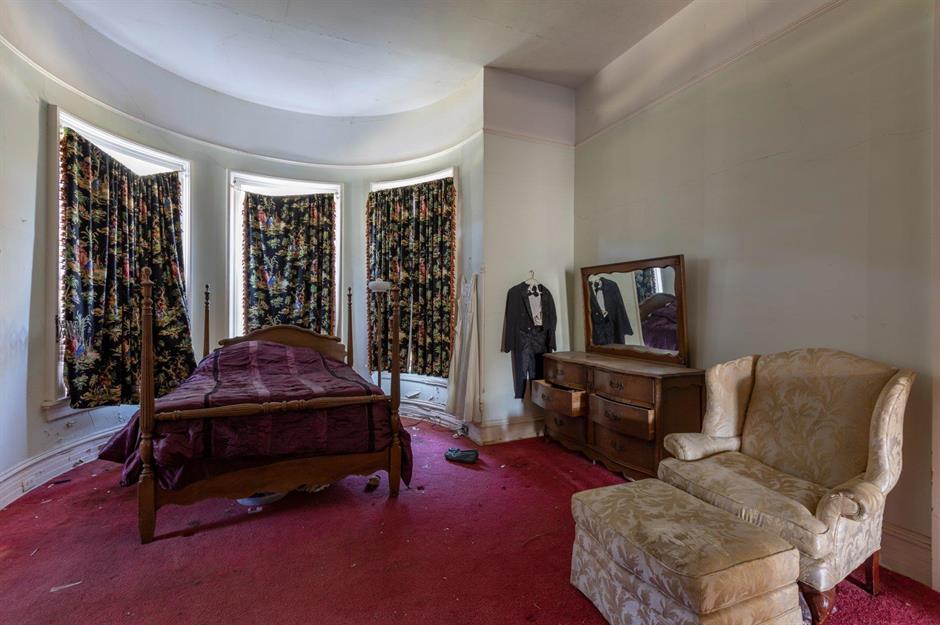
A veritable time-warp, this bedroom on the upper level of the property appears to be unchanged from when its last owners left the property for the final time.
A pair of shoes sits abandoned in the middle of the floor, and what looks like a wedding gown and tuxedo are still hanging by the dressing table, as if the couple upped and ran away before their big day.
From the 1930s, the home passed between various owners until 2012, when it was sold to its current owner. Restoration works were reportedly carried out on the home in 2013, but a couple of years later, it was left empty once more. Here’s hoping this magnificent home can be rescued before it’s too late…
Château Miranda, Celles, Belgium
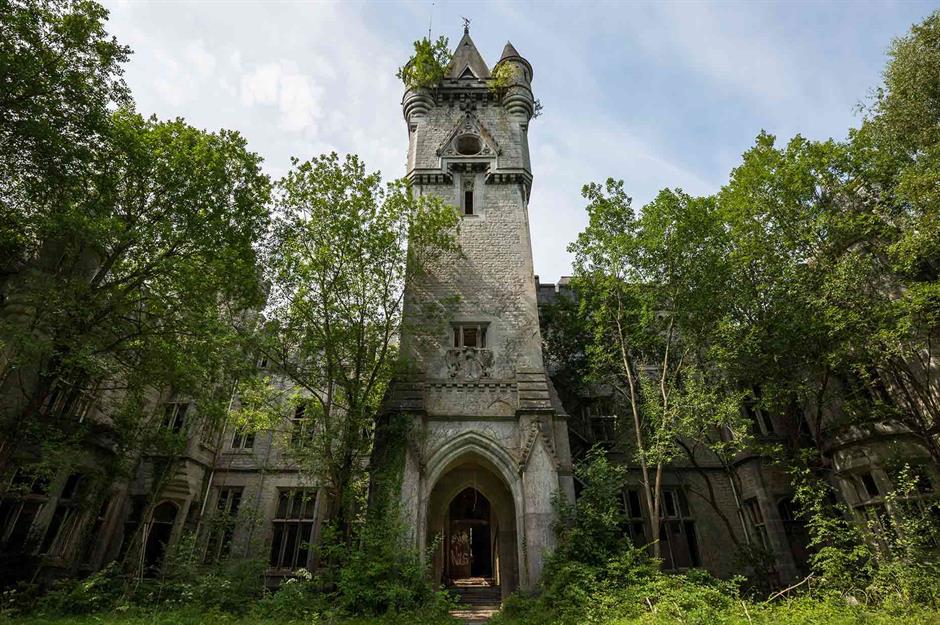
The eerie neo-Gothic Château Miranda in Celles, Belgium was built in 1866 by English architect Edward Milner for the aristocratic Liedekerke-Beaufort family. These doomed aristocrats lost their original seat, the Château de Vêves, during the French Revolution.
Château Miranda, Celles, Belgium
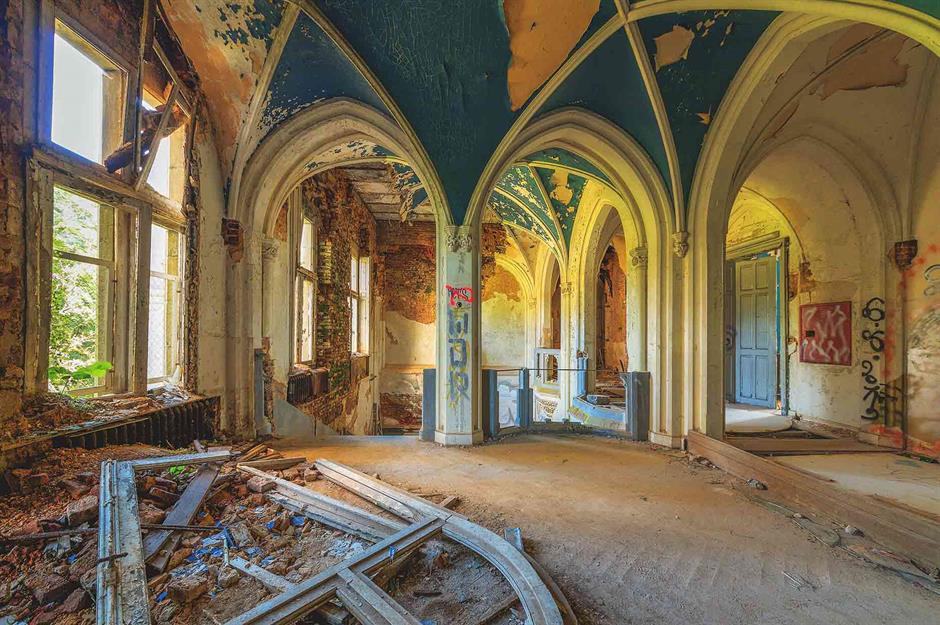
imageBROKER.com GmbH & Co. KG / Alamy
Unfortunately, history was to repeat itself, and the family were forced to give up their home for good in the Second World War when it was taken over by the Nazis.
After the war, the property was renamed Château de Noisy and repurposed as an orphanage and holiday camp. The château was last used as a school before it was abandoned in 1991.
Château Miranda, Celles, Belgium
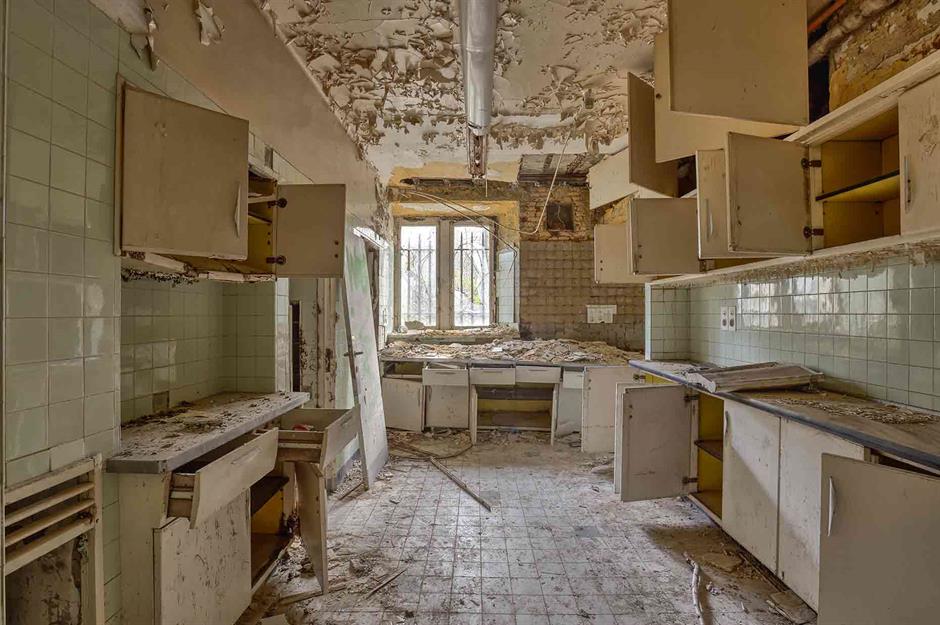
Plagued by neglect and vandalism, the abandoned stately home was severely damaged by a fire in 1995, and in 2006 a freak storm destroyed much of what was left of the roof.
A decade later, a new chapter was seemingly on the horizon. Local developer Luc Lavroff had ambitious plans to dismantle the structure and rebuild it in Spain. Work began in earnest but unfortunately, this is not a story with a fairytale ending.
Château Miranda, Celles, Belgium
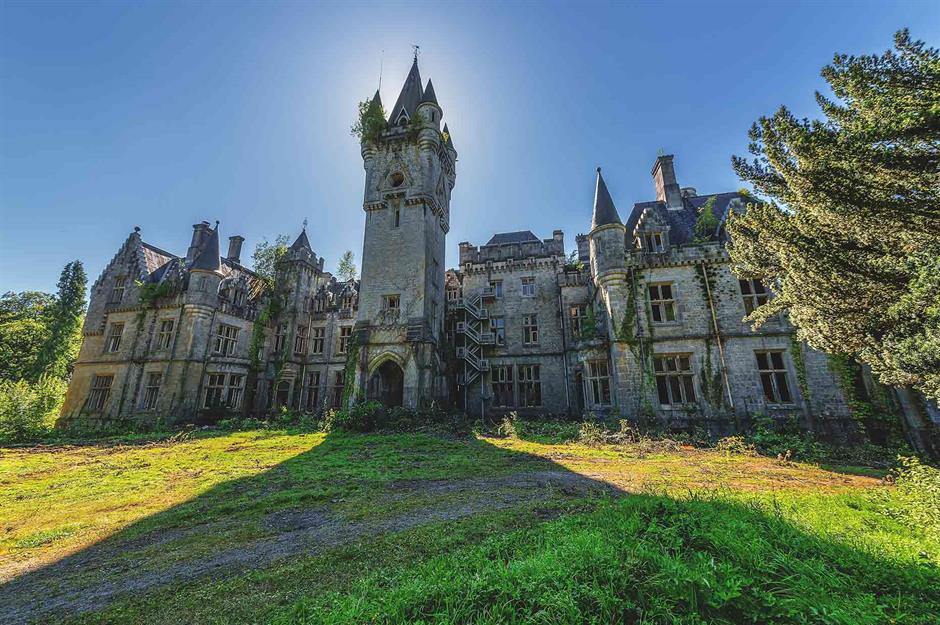
imageBROKER.com GmbH & Co. KG / Alamy
Tragically, Lavroff was diagnosed with cancer in February 2017 and pulled out of the deal, leaving the half-dismantled building in the hands of demolition firm Castignetti.
Unable to find a buyer, the company made the difficult decision to demolish the château and it was completely bulldozed by October of the same year.
Pidhirtsi Castle, Pidhirtsi, Ukraine
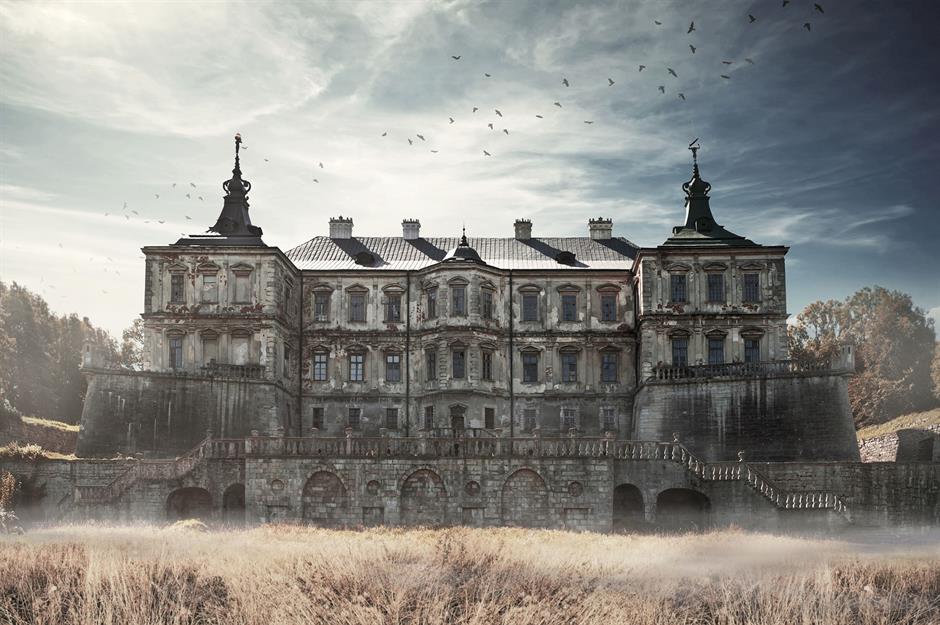
Lals Stock / Shutterstock
The Ukraine’s creepiest country pile, Pidhirtsi Castle was built between 1635 and 1640 for Grand Crown Hetman Stanisław Koniecpolski of the Polish-Lithuanian Commonwealth.
The stately home passed through several owners until the First World War when it was captured by Russian troops who looted most of its contents.
Pidhirtsi Castle, Pidhirtsi, Ukraine

Priceless antique furnishings, paintings and fixtures and fittings, including many of the castle’s exquisite marble fireplaces, were stripped away and the interiors ransacked.
This image, taken by photographer Edward Trzemeski sometime in the late 19th century, shows the house in its heyday. It depicts the once-lavish Crimson Hall, complete with a painted ceiling frieze encircled by gilding. Extravagant chandeliers were hung throughout the space, above a patterned marble floor.
Pidhirtsi Castle, Pidhirtsi, Ukraine
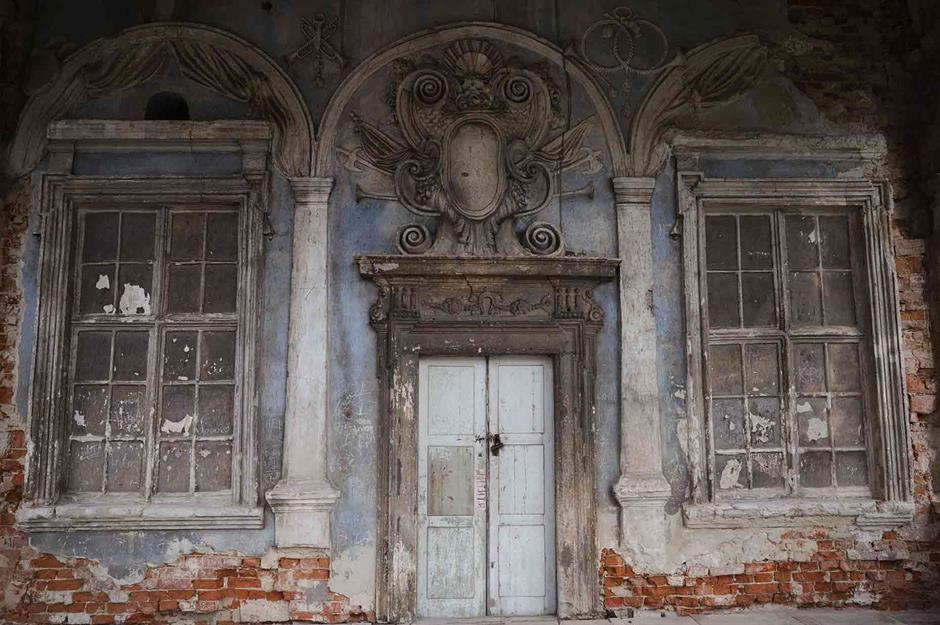
After it was looted and its grandeur diminished, the castle was then claimed by Prince Roman Sanguszko of Poland, who resided at the property during the interwar years, before fleeing at the outbreak of the Second World War.
Following the war, it was confiscated by the Soviets and served as a tuberculosis sanatorium.
Pidhirtsi Castle, Pidhirtsi, Ukraine
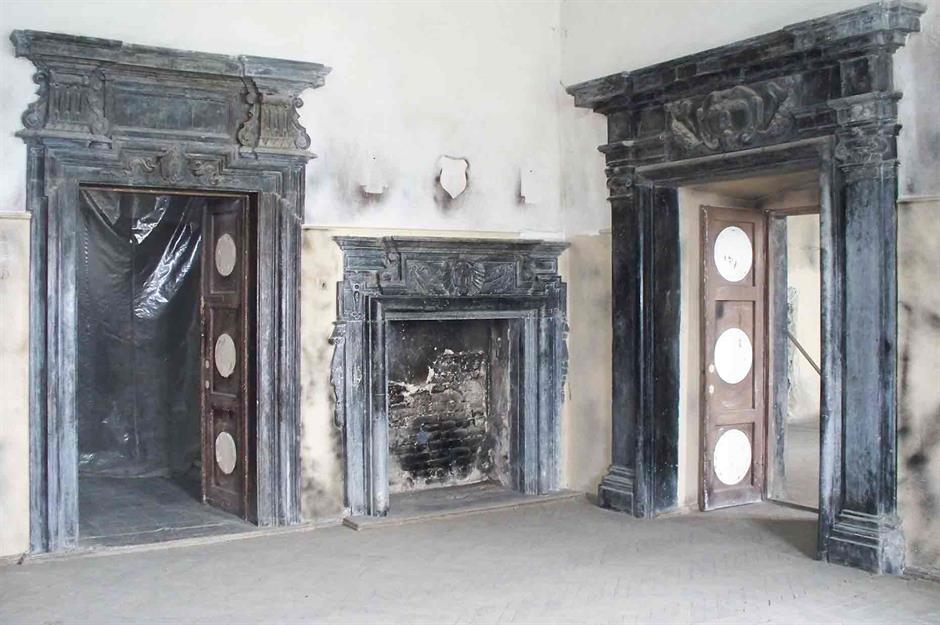
Black lotos / Wikimedia Commons [CC BY-SA 3.0 DEED]
A catastrophic fire devastated the castle in 1956 and the property was abandoned. After lying empty for decades, the abandoned palace was bought in 1997 by the Lviv Gallery of Arts and converted into a museum.
The gallery is said to have embarked on a major restoration following the purchase, however, it’s unknown what condition the castle is in now following the Russian invasion of Ukraine in 2022.
Dundas Castle, New York, USA
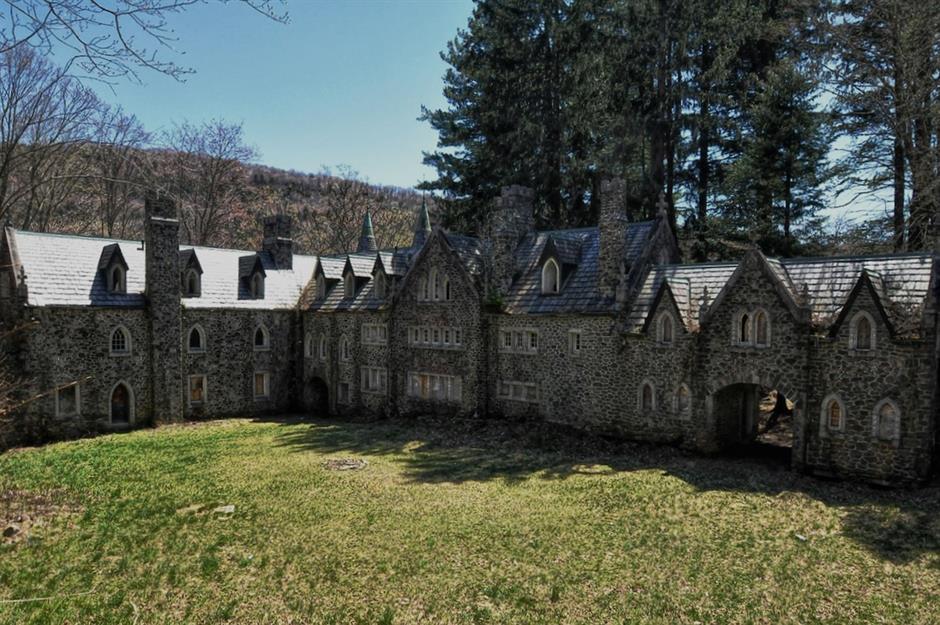
Forsaken Fotos / Flickr [CC BY 2.0]
Staying with sinister castles, Dundas Castle, aka Craig-E-Clair, lies deep in New York’s Catskill Mountains. The so-called ‘Castle of Sorrow’ has a particularly sad back story. The building was commissioned by wealthy New Yorker Ralph Wurts-Dundas in the late 1910s, but he died in 1921 before the castle’s completion.
The castle is captured here by photographer Walter Arnold, who documented the castle in all its faded grandeur on his YouTube channel.
Dundas Castle, New York, USA
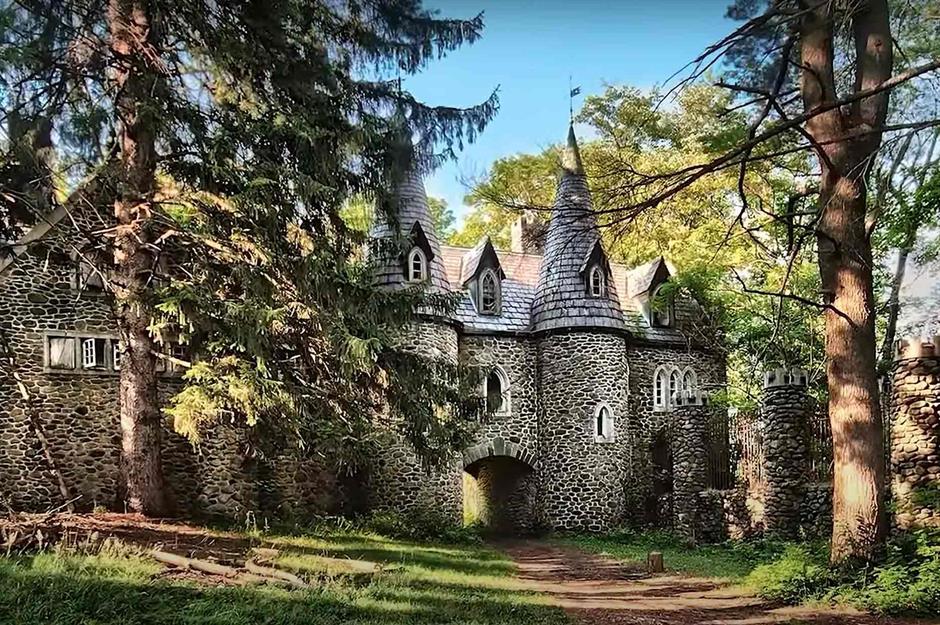
Walter Arnold Photography / The Art of Abandonment
A year later, Wurts-Dundas’ bereft widow Josephine was committed to an asylum and the half-finished property passed to the couple’s daughter Muriel. However, she was reportedly duped out of her inheritance and eventually moved to England where her mental health went downhill.
The castle remained unfinished, despite the work that had already been lavished on it.
Dundas Castle, New York, USA
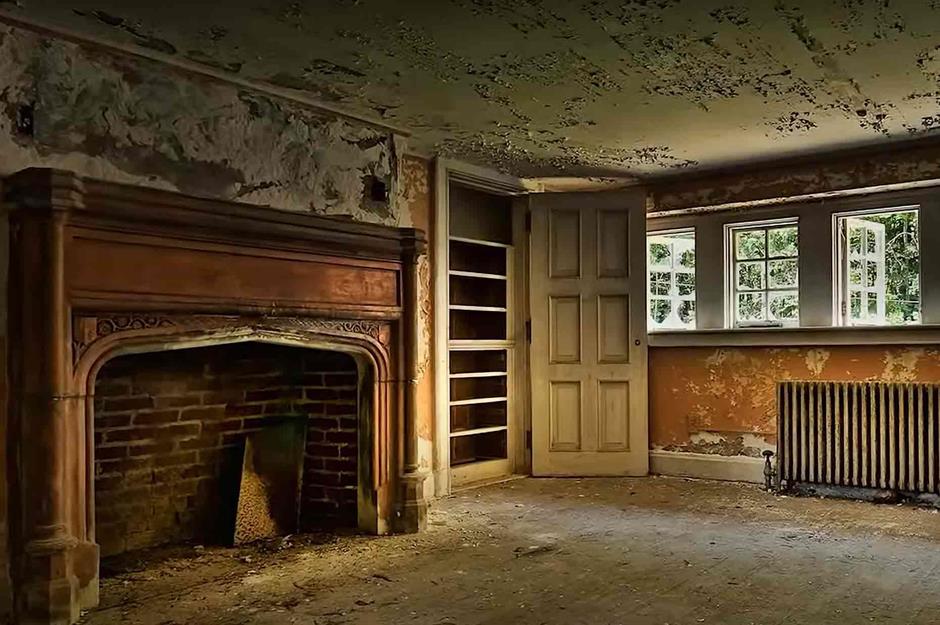
Walter Arnold Photography / The Art of Abandonment
The estate of Muriel Wurts-Dundas eventually sold the property in 1949. It was snapped up by the Prince Hall Grand Lodge of the Masonic Order. The property was used as a masonic retreat and holiday camp until the 1970s when it was largely abandoned. The castle has sat empty ever since.
Dundas Castle, New York, USA
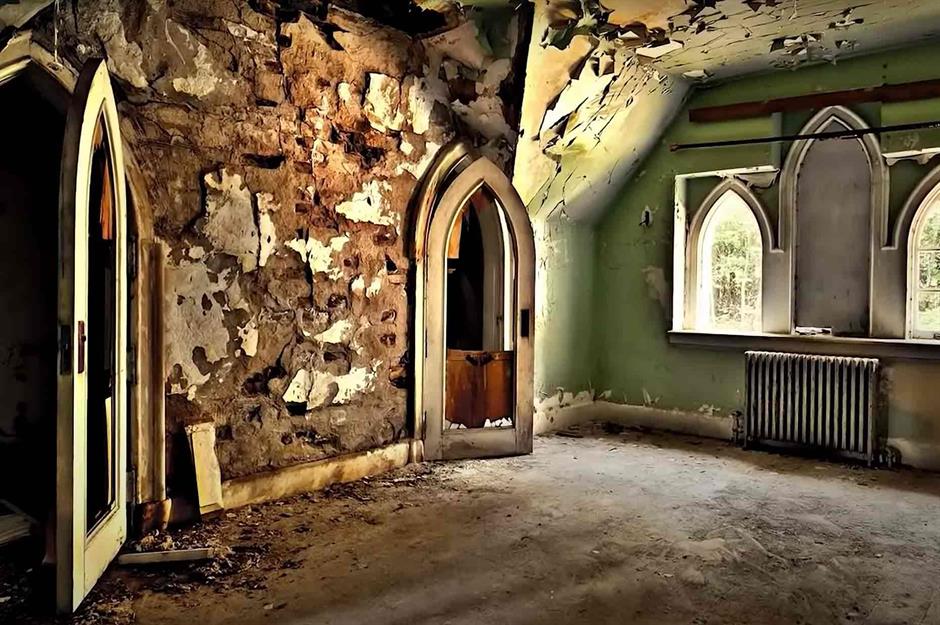
Walter Arnold Photography / The Art of Abandonment
Today, the abandoned castle, which is listed on the National Register of Historic Places, is out of bounds to the public and guarded by a caretaker.
It is said to be haunted by the ghost of Josephine Wurts-Dundas and according to local legend, the water in the ponds on the estate turns to blood when the moon is full.
Château Burrus, Sainte-Croix-aux-Mines, France
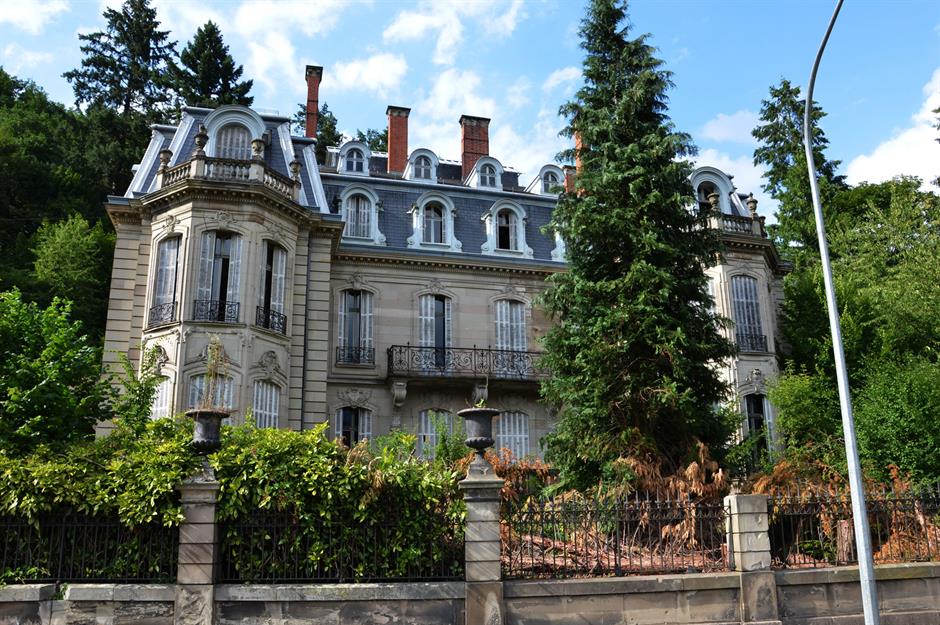
Th. Franot / Wikimedia Commons [CC BY-SA 3.0]
Rising up amid the trees, this splendid and sinister neo-Baroque château in the French region of Alsace was built in 1900 for tobacco magnate and philanthropist Jules Burrus.
The property was inherited in 1911 by his son Marcel, who held onto it until the First World War when Germany invaded France.
Château Burrus, Sainte-Croix-aux-Mines, France

After Burrus refused to supply the German army with free cigarettes, the château was requisitioned as punishment and the tobacco heir fled to neutral Switzerland.
Burrus reclaimed his home after the war, but it was confiscated yet again by the Germans in the Second World War and used as a training centre for SS officers.
Château Burrus, Sainte-Croix-aux-Mines, France
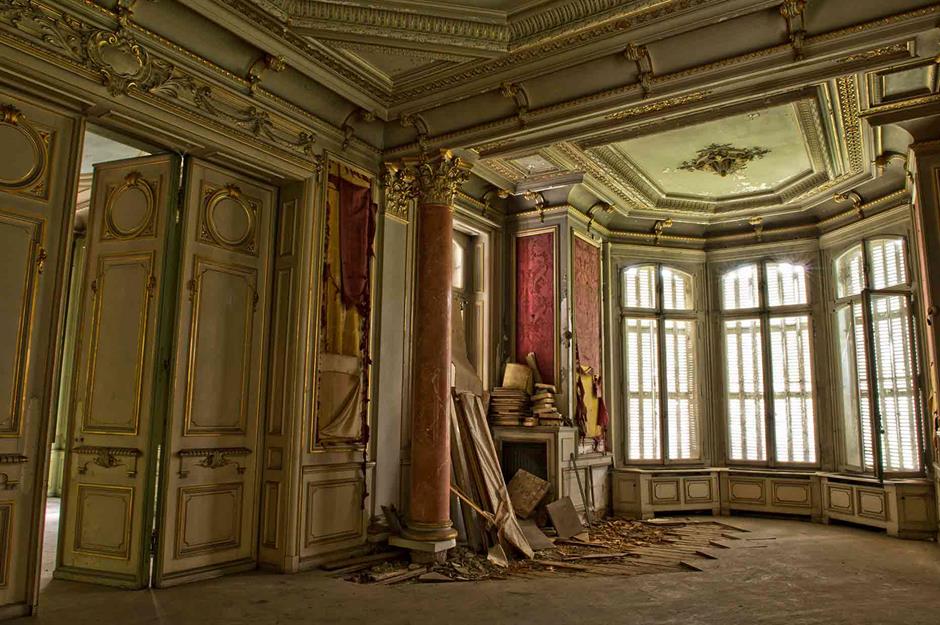
Burrus, who had spent the war hiding out in the Pyrenees, recovered the château in 1945 and it remained under the tobacco scion’s ownership until his death in 1959.
The property was purchased by a religious order and then sold on, but it was left vacant in the early 1990s.
Signs of its grandeur of still evident today, despite the mansion’s dilapidated condition. This magnificent bay window is flanked by exquisite silk brocade wallpaper and gilded moulding.
Château Burrus, Sainte-Croix-aux-Mines, France

Also known as Château Lumière on account of its wonderful light-filled rooms, the abandoned mansion has been more or less unmaintained for the past 30 years. Sadly, it has succumbed to vandalism and is positively crying out for an extensive restoration.
Mystery mansion, New York, USA
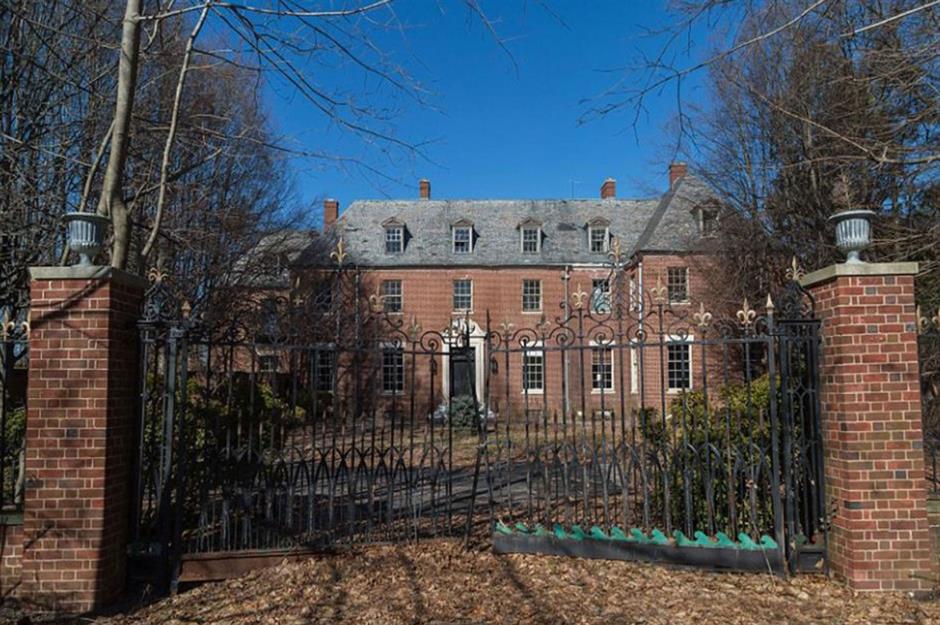
This unsettling mansion, which is situated in a mystery location in New York State just a few miles away from the Big Apple, was accessed in 2016 by renowned abandoned buildings photographer Bryan Sansivero.
Mystery mansion, New York, USA
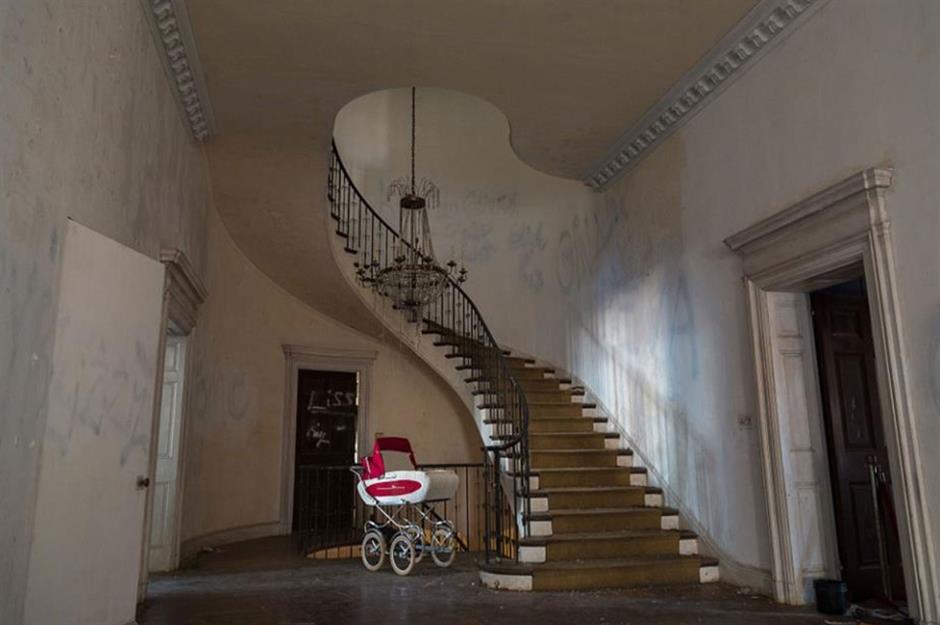
The 57-room mummified mansion, which dates from the 1930s, was abandoned in 1976 by its owner, who was known to acquire grand houses and bizarrely leave them to crumble. Looking like a horror movie set, the house remains eerily frozen in time.
Mystery mansion, New York, USA
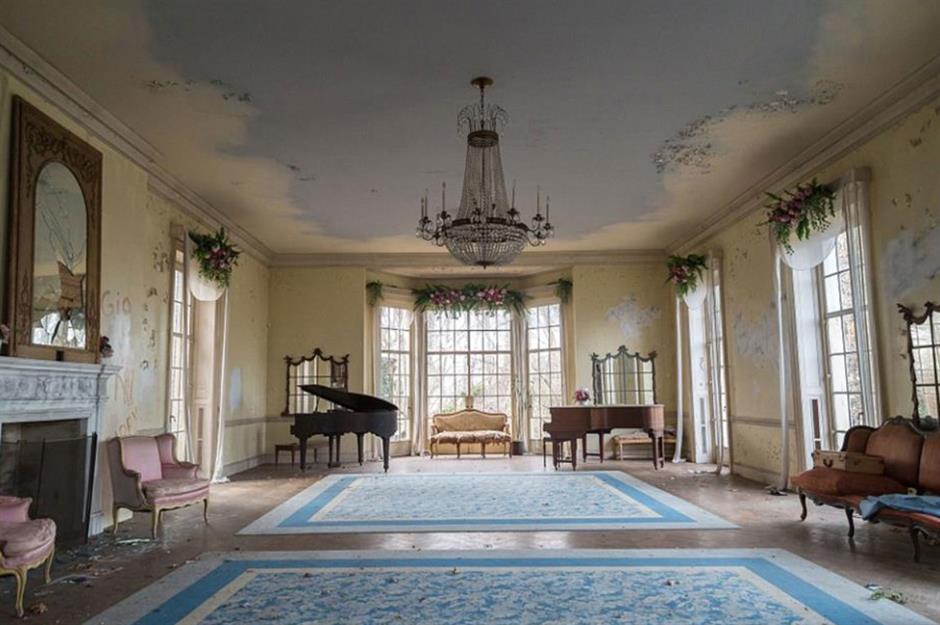
The bulk of the home’s fixtures and furnishing were inexplicably left to rot, including the grand pianos, antique sofas, marble fire surround and crystal chandelier that adorn the cavernous drawing room.
Mystery mansion, New York, USA
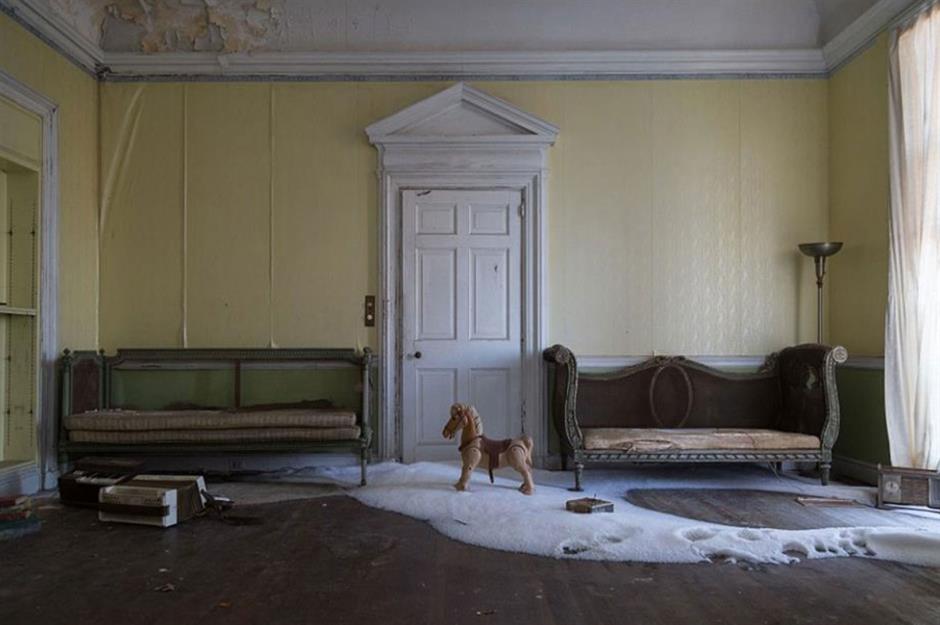
Vandals have scrawled graffiti on some of the walls, the paintwork is peeling off and some of the windows are broken, letting the elements into the once-grand interior. Aside from these issues, the mansion is in surprisingly good shape.
Château de Vyle-et-Tharoul, Vyle-et-Tharoul, Belgium
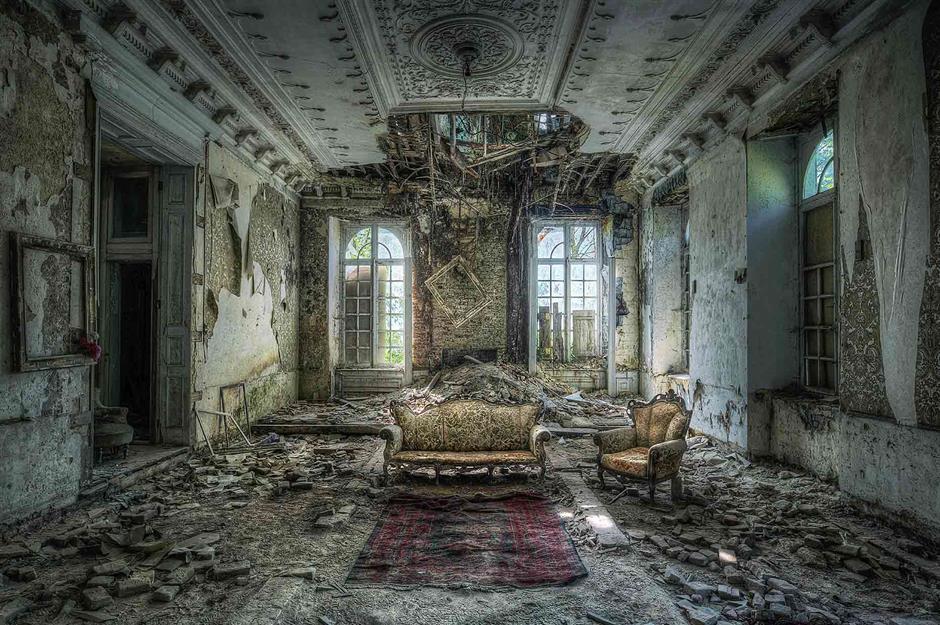
Cristian Lipovan / Shutterstock
Dating back to the late 18th century, this Louis XV-style château in the sleepy Belgian village of Vyle-et-Tharoul was largely reconstructed during the 1820s by the Lamarche-Francotte family, who like the aforementioned Burrus clan, were rich tobacco tycoons.
Château de Vyle-et-Tharoul, Vyle-et-Tharoul, Belgium
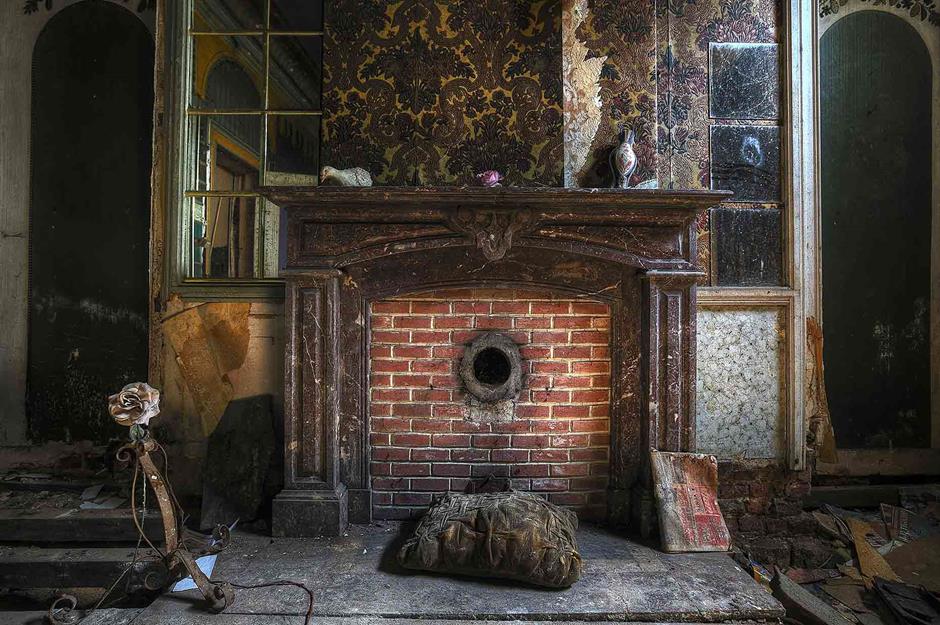
Cristian Lipovan / Shutterstock
Also known as Château Congo, the property was later owned by Count Alphonse de Meeus and stayed in the aristocratic de Meeus family until the Second World War, when it was confiscated by the Nazis.
After the German Army retreated from Belgium, the château was taken over by American forces.
Château de Vyle-et-Tharoul, Vyle-et-Tharoul, Belgium
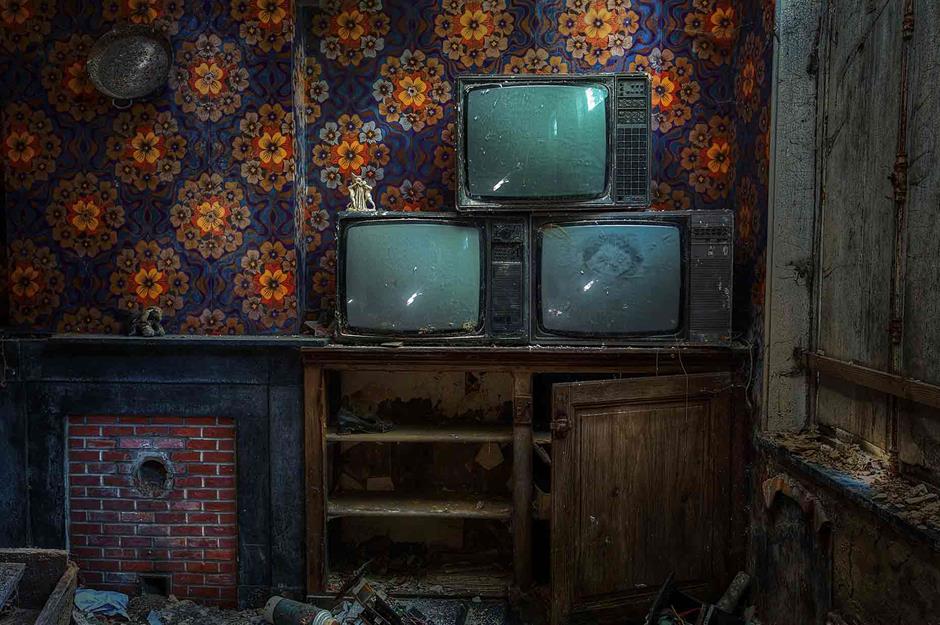
Cristian Lipovan / Shutterstock
Following the war, the property was purchased by an entrepreneur who had made a fortune in Africa, hence the château’s alternative name, but the fortune was soon lost.
The owner was unable to pay for maintenance and as a result, the property deteriorated into an appalling state. It was finally abandoned in 2010.
Château de Vyle-et-Tharoul, Vyle-et-Tharoul, Belgium

Cristian Lipovan / Shutterstock
As luck would have it, this is one abandoned fairytale château that boasts a happy ending after all. In 2016, the property was bought by local public works company Cop & Portier, with the intention of converting the structure into 15 upscale apartments. It’s unclear if the project has yet been completed.
Harley Clarke Mansion, Illinois, USA
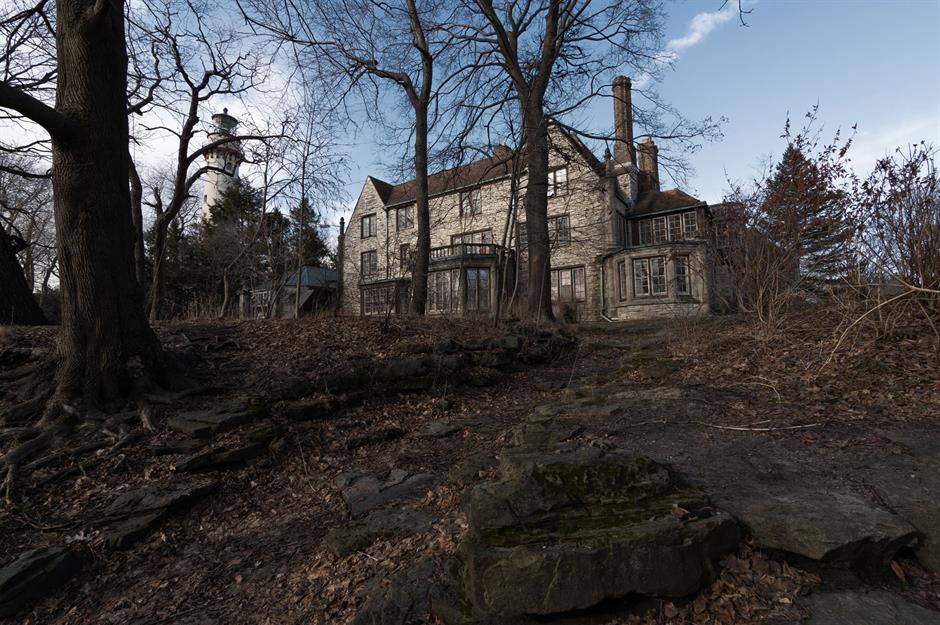
Eddie J. Rodriquez / Shutterstock
This foreboding French Eclectic-style mansion is located on Lighthouse Beach in Evanston, Illinois. It was constructed in 1927 for mega-wealthy utility magnate Harley Clarke, who went on to become the president of the Fox Film movie studio.
Harley Clarke Mansion, Illinois, USA
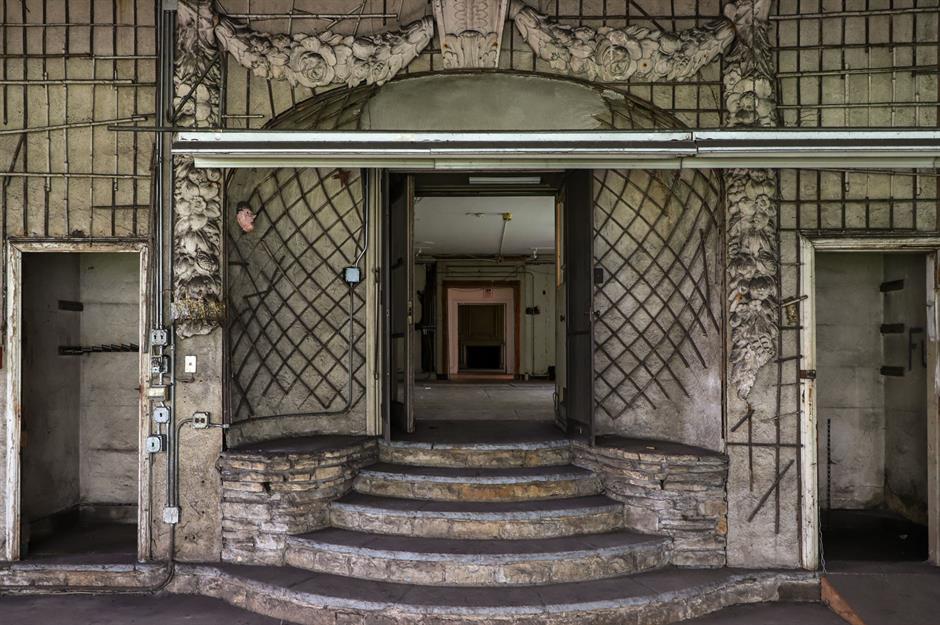
Paul R. Burley / Wikimedia [CC BY-SA 4.0]
No expense was spared on the 16-room limestone mansion, which commands an enviable position backing onto Lake Michigan.
Clarke resided at the property with his family until 1949. A victim of the Great Depression, he was forced to sell his beloved mansion to the Sigma Chi fraternity.
Harley Clarke Mansion, Illinois, USA
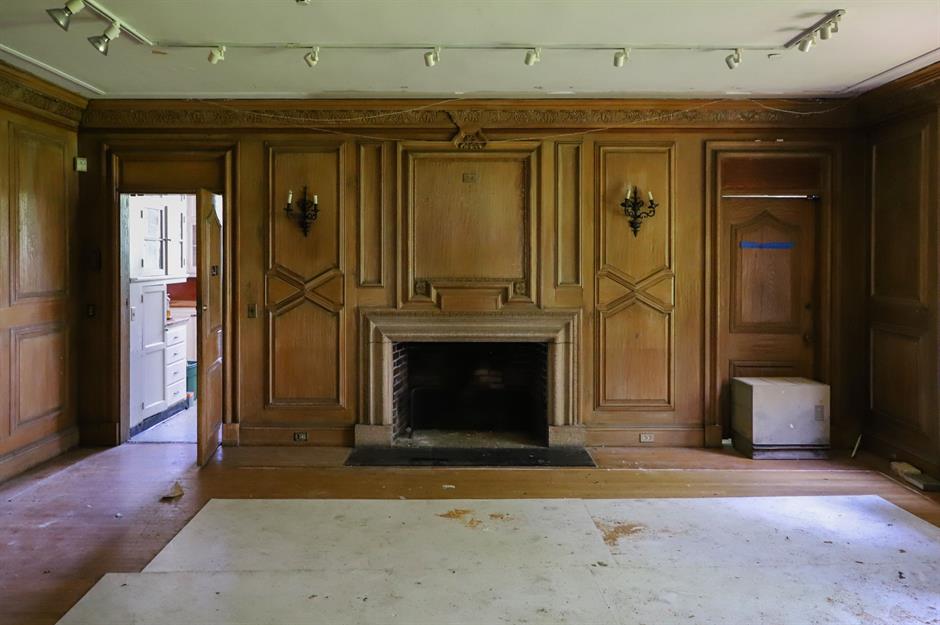
Paul R. Burley / Wikimedia [CC BY-SA 4.0]
The house was sold by the frat organisation to Evanston’s City Council in 1964 and repurposed as the Evanston Art Center.
After the nonprofit moved to new premises in 2015, the dilapidated dream home was left vacant and in desperate need of a revamp.
The mansion narrowly escaped demolition in 2018, when the Evanston Preservation Committee voted unanimously to deny the council permission to raze it to the ground.
Harley Clarke Mansion, Illinois, USA
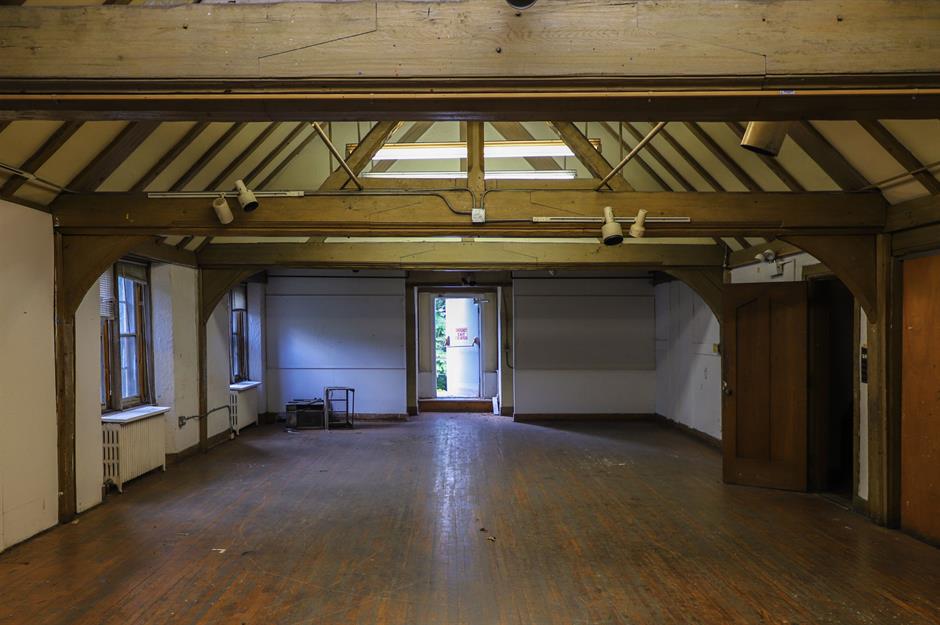
Paul R. Burley / Wikimedia [CC BY-SA 4.0]
Artists Book House, a group co-founded by author Audrey Niffenegger, hoped to breathe new life into the structure by transforming the space into a literary haven, offering writing workshops, a gallery and a cafe. However, the project was abandoned in September 2023 after the group struggled to raise the millions of dollars necessary to renovate the building.
Now the mansion’s future is hanging in the balance, as preservation organisation Landmarks Illinois searches for a new buyer to rescue the landmark structure.
Loved this? Like and follow us on Facebook for more amazing abandoned homes
